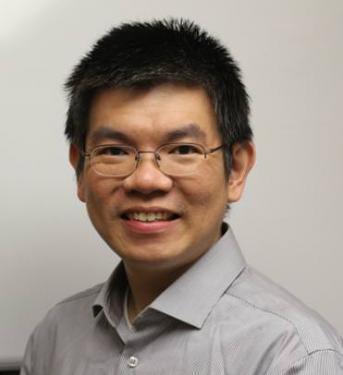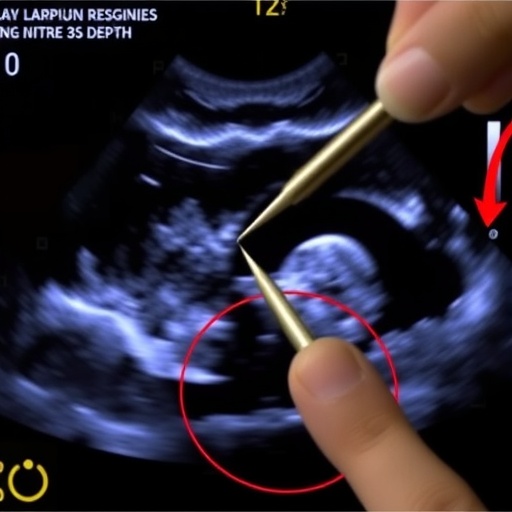
Credit: UT Health San Antonio
Researchers at The University of Texas Health Science Center at San Antonio (UT Health San Antonio) have discovered a new class of proteins that protect synapses from being destroyed. Synapses are the structures where electrical impulses pass from one neuron to another.
The discovery, published July 13 in the journal Nature Neuroscience, has implications for Alzheimer’s disease and schizophrenia. If proven, increasing the number of these protective proteins could be a novel therapy for the management of those diseases, researchers said.
In Alzheimer’s disease, loss of synapses leads to memory problems and other clinical symptoms. In schizophrenia, synapse losses during development predispose an individual to the disorder.
“We are studying an immune system pathway in the brain that is responsible for eliminating excess synapses; this is called the complement system,” said Gek-Ming Sia, PhD, assistant professor of pharmacology in UT Health San Antonio’s Long School of Medicine and senior author of the research.
“Complement system proteins are deposited onto synapses,” Dr. Sia explained. “They act as signals that invite immune cells called macrophages to come and eat excess synapses during development. We discovered proteins that inhibit this function and essentially act as ‘don’t eat me’ signals to protect synapses from elimination.”
The system sometimes goes awry
During development, synapses are overproduced. Humans have the most synapses at the ages of 12 to 16, and from then to about age 20, there is net synapse elimination that is a normal part of the brain’s maturation. This process requires the complement system.
In adults, synapse numbers are stable, as synapse elimination and formation balance out. But in certain neurological diseases, the brain somehow is injured and begins to overproduce complement proteins, which leads to excessive synapse loss.
“This occurs most notably in Alzheimer’s disease,” Dr. Sia said.
In mouse models of Alzheimer’s disease, researchers have found that the removal of complement proteins from the brain protects it from neurodegeneration, he said.
“We’ve known about the complement proteins, but there was no data to show that there were actually any complement inhibitors in the brain,” Dr. Sia said. “We discovered for the first time that there are, that they affect complement activation in the brain, and that they protect synapses against complement activation.”
Future directions
Dr. Sia and his colleagues will seek to answer interesting questions, including:
- Whether complement system biology can explain why some people are more resistant and more resilient against certain psychiatric disorders;
- How the number of complement inhibitors can be changed and whether that could have clinical ramifications;
- Whether different neurons produce different complement inhibitors, each protecting a certain subset of synapses.
Regarding the last question, Dr. Sia said:
“This could explain why, in certain diseases, there is preferential loss of certain synapses. It could also explain why some people are more susceptible to synapse loss because they have lower levels of certain complement inhibitors.”
The researchers focused on a neuronal complement inhibitor called SRPX2. The studies are being conducted in mice that lack the SRPX2 gene, that demonstrate complement system overactivation and that exhibit excessive synapse loss.
Acknowledgments
This project is funded by a NARSAD Young Investigator Award from the Brain and Behavior Research Foundation, a grant from the William and Ella Owens Medical Research Foundation, a Rising STARs Award from The University of Texas System, and grants from two branches of the U.S. National Institutes of Health – the National Institute of Neurological Disorders and Stroke, and the National Institute on Deafness and Other Communication Disorders.
The endogenous neuronal complement inhibitor SRPX2 protects against complement-mediated synapse elimination during development
Qifei Cong, Breeanne M. Soteros, Mackenna Wollet, Jun Hee Kim and Gek-Ming Sia
First published: July 13, 2020, Nature Neuroscience
https:/
The Long School of Medicine at The University of Texas Health Science Center at San Antonio is named for Texas philanthropists Joe R. and Teresa Lozano Long. The school is the largest educator of physicians in South Texas, many of whom remain in San Antonio and the region to practice medicine. The school teaches more than 900 students and trains 800 residents each year. As a beacon of multicultural sensitivity, the school annually exceeds the national medical school average of Hispanic students enrolled. The school’s clinical practice is the largest multidisciplinary medical group in South Texas with 850 physicians in more than 100 specialties. The school has a highly productive research enterprise where world leaders in Alzheimer’s disease, diabetes, cancer, aging, heart disease, kidney disease and many other fields are translating molecular discoveries into new therapies. The Long School of Medicine is home to a National Cancer Institute-designated cancer center known for prolific clinical trials and drug development programs, as well as a world-renowned center for aging and related diseases.
The University of Texas Health Science Center at San Antonio, also referred to as UT Health San Antonio, is one of the country’s leading health sciences universities and is designated as a Hispanic-Serving Institution by the U.S. Department of Education. With missions of teaching, research, patient care and community engagement, its schools of medicine, nursing, dentistry, health professions and graduate biomedical sciences have graduated more than 37,000 alumni who are leading change, advancing their fields, and renewing hope for patients and their families throughout South Texas and the world. To learn about the many ways “We make lives better®,” visit www.uthscsa.edu.
Stay connected with UT Health San Antonio on Facebook, Twitter, LinkedIn, Instagram and YouTube.
Media Contact
Will Sansom
[email protected]
Original Source
https:/
Related Journal Article
http://dx.





